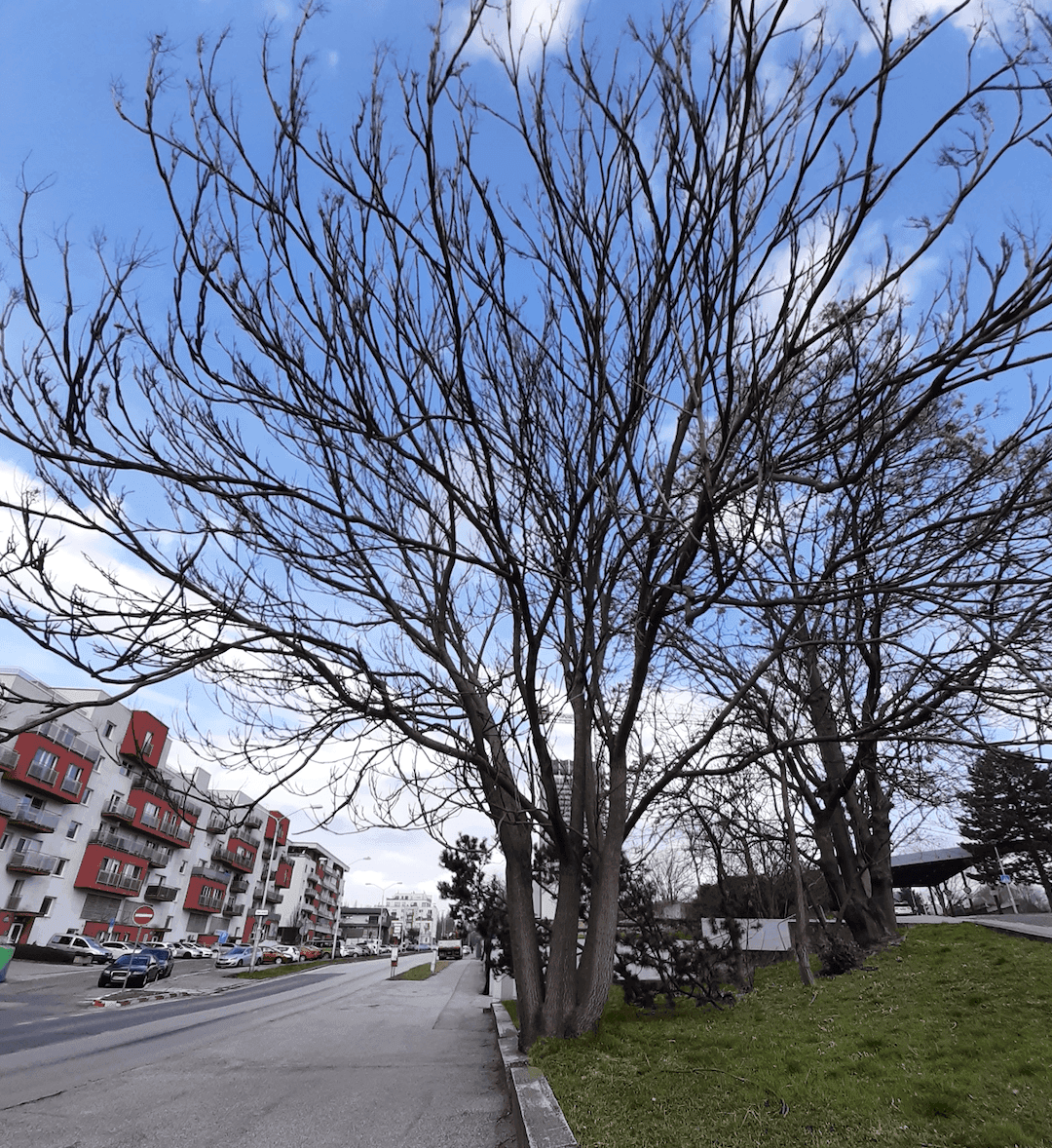Invasive Trees
The removal of invasive tree species is also an essential part of the care of urban greenery. This legal obligation has long been neglected, which is why removing an invasive species today often means cutting down a perennial mature tree to which residents have become accustomed. In effect, these species are extremely harmful. Due to their extremely rapid growth and vigour, they spatially oppress the surrounding vegetation and desirable species of urban greenery, destroying building facades and roadways.
Ailanthus altissima, Negundo aceroides and Fallopia japonica are the most widespread invasive woody plants in our city. Because of their toxicity, they are harmful not only to our native tree species and their habitats, but also to humans and animals.
The legislation specifies not only the types of invasive plants, but also the manner in whcich their removal is to be carried out. Destruction by injection of a chemical solution - herbicide - into the trunk or stem of the tree is prescribed for the above species. Mechanical destruction - felling - should only be carried out after the herbicide has had a visible effect in the form of the tree drying out.
